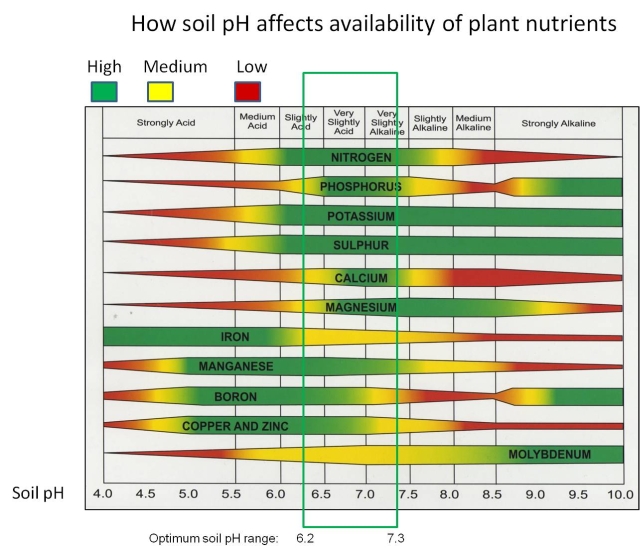
When needed, liming materials can be major beneficial inputs for crop production. When soils are acid, lime will neutralize the soil to the ideal pH. pH can affect the availability of plant nutrients and impact microbial activity, so managing it can be of great benefit, but can also cost a lot. Here’s a look at what to consider before liming your agricultural soil.
The Need for Lime
Liming neutralizes soil acidity. The amount of lime that a soil needs will depend on the pH of the soil (active acidity), quality of liming material (effective neutralizing power or ENP), buffering capacity of the soil (reserve acidity) and your target pH. A pH of 6.0 is adequate for growing corn, soybean, sugar beets and most small grains. Alfalfa prefers a pH of 6.5.
Most soil testing labs will test the buffer pH of soil when the water pH is less than optimum levels for crop growth. The buffer pH measures reserve acidity or alkalinity of the soil and determines the lime requirement of the soil. The lower the buffer pH the greater the amount of lime required to change the water pH of the soil.
Lime requirements can vary considerably within fields, especially on glacial till soils. Soil type, landscape position, and depth to carbonates can greatly affect soil pH and lime requirement; therefore, soil testing to determine pH levels and lime requirement and variable rate application is critical to obtaining a return on investment to liming. In western Minnesota, suggested lime rates to get to the same soil pH are less than in eastern Minnesota due to carbonate layers being close to the soil surface. Knowing what area of the state you are in, Area 1 or 2, is important when determining lime requirements in Minnesota.
Recent Research
Research from Iowa State University in Iowa and Waseca, Minn. on glacial till soils with carbonates in the subsoil (calcareous subsoil) found liming increased corn and soybean yields. In Minnesota, corn and soybean grain yield was increased by 2.5% on sites where soil water pH levels that ranged from 5.0 - 5.9. Iowa research on soils with acid subsoils found liming increased corn and soybean yields about 5%.
Liming the soil can be a long-term investment and benefits need to be weighed over time. The Waseca, Minn. soil noted above had a high reserve acidity and required high rates of lime to raise soil pH. At these rates the yield response to liming did not give a return on investment, even when averaged across several cropping seasons.
Consider the Cost
Even if it has shown to increase yield, the cost of liming can be substantial. A lot goes into it. Soil sampling, the material itself, transportation and application all cost money. Some farmers have access to free or inexpensive liming materials like water treatment lime. If that’s the case, then make sure to compare the quality, known as effective neutralizing power (ENP), transportation and application costs to those of conventional ag lime to determine their value.
During these difficult financial times in agriculture, farmers and their advisors need to scrutinize all inputs including lime and its potential return on investment before making any decisions. Use the soil test, determine your needs and go from there.





